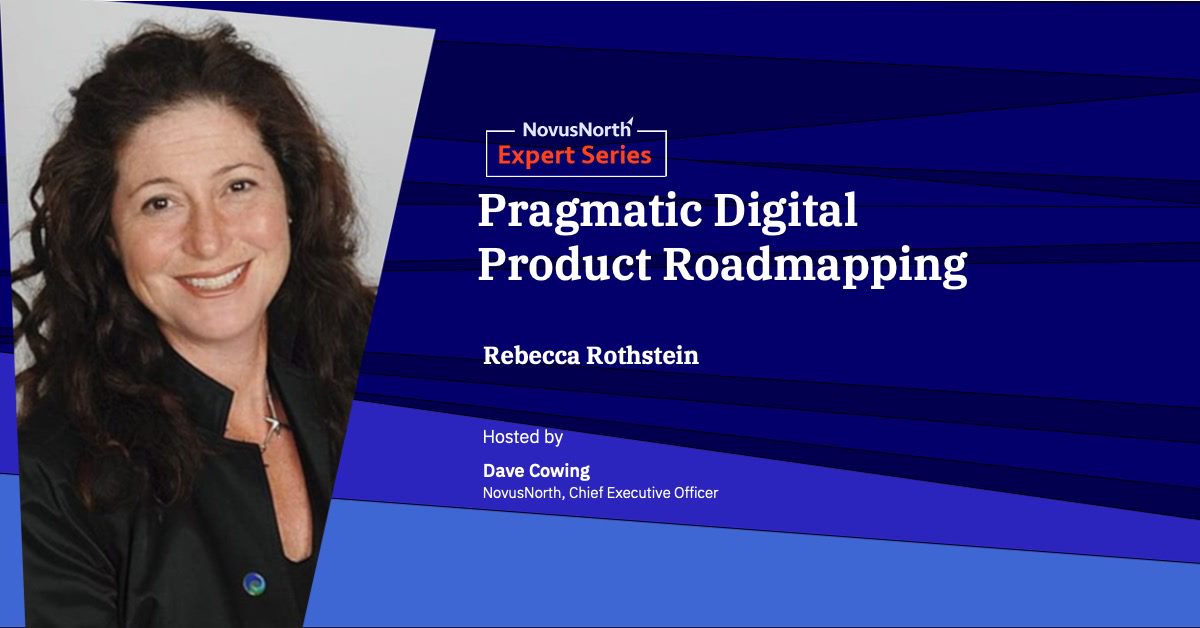Getting started with a new product or digital initiative can be exciting. Many product managers are eager to get their engineers to work writing the code and their designers creating new designs. They often view these as the critical path to launching their product. While diving in and running may seem to give the appearance of productivity, you may be building without a foundation. Before you begin, there are a 6 essential questions you should explore and answer as ruthlessly and truthfully as possible. These will help ensure that your product is successful. Your answers to these questions will also provide the foundation for decision making on your product journey.
The questions that you should explore are:
- Goals – Have you clearly defined your goals and objectives as a business, department, and team?
- Customer Understanding – Do you understand your customers’ pain points, needs, wants, and goals?
- Functional Capabilities – What are the specific capabilities that need to be built?
- Resources and Processes – What are the organizational, personnel, or operational changes that may be needed?
- The Living “Plan” – What’s the plan to get you there and has it been created to respond to changes?
- Communicating The Plan – How are you going to communicate your plan to all of the key stakeholders involved in this initiative?
If you don’t have answers to these questions or decide to skip or omit some of them, you’ll run into challenges later in the initiative. You may find your product doesn’t meet the needs of your business, misses the mark with customers, or lacks organizational support.
A Deeper Dive Into The 6 Essential Questions
Let’s take a look at each of these areas and what to think about as you investigate and develop your answers.

Goals
Have you clearly defined your goals as a business, department, and team?
The first step in any product journey should be to define your goals. What outcomes do you hope to achieve for your business? This provides a way to set expectations of stakeholders and the foundation for discussions on success or challenges. It also provides a yardstick by which you can measure progress of your program and make incremental decisions along the way. It’s critical that these goals be specific and reasonably tied to the impact you expect your product to have. If a goal is too high level, you should decompose it. For example, increasing the company’s revenue may sound good, but can be affected by many other things, obscuring the impact of your product. Instead consider revenue targets or increases in revenue tied to your product offering. Also consider a mix of lagging and leading indicators. In the revenue example the target is an example of a lagging indicator – it tells you about the success or failure of your product after it’s occurred. Leading indicators to consider might be an increase in the number of product demos, the number of new client’s signed up, or an increase in product usage.
As important, if not more so, are the goals your customers has. For a product to truly be successful, it must enable a goal to meet specific objectives they have. These goals may include solving a problem, making a process easier, or providing them access to new and valuable capabilities. Knowledge of the customers’ goals is critical to prioritizing features, designing the user interface and building the product. To build the right things, you need to understand how the users will use it and what value it will provide.

Customer Understanding
Do you understand your customers’ pain points, needs, wants, and goals?
If you want to create a successful product, you need to have deep insights into the needs of your customers. Customer research is vital to understand their behavior and needs. Without this understanding, it would be difficult to create a product that meets their requirements. There are many different research methods that you can use to gain insights into your customers. Surveys, interviews, and diary studies are all excellent ways to learn about their wants and needs. By taking the time to understand your customers, you’ll be able to create a product that they’ll love.
I can’t count how many times organizations have told us they know their customers. That they spend a lot of time talking to them and have heard what they need. But when we drill in, this is based on relationships that a salesperson, account manager, or customer service relationship with the client. The question to ask is how much time does your organization spend sitting with your customer and observing them perform their work? Humans are notoriously bad at self-assessment or reporting on what they actually do, let alone what they need. Whether it’s overestimating one’s abilities (studies have found that on average, people think they’re above average), recency effects, or acquiescence biases, our psychological machinery is not built for objective self-reporting. On top of that users often don’t notice the workarounds, tips and tricks they’ve learned or not know that there’s a better way, resulting in omission from any self-reporting.
As a result, it’s useful to engage in conducting solid research that’s designed with these challenges in mind. To understand user needs, well designed user research is a critical step in the process. For example, observational techniques such as contextual inquiry bypass many of the challenges stated above by sitting with a user and watching them perform a task while they are narrating what they are doing. This almost always provides new insights and critical detail.

Functional Capabilities
What are the specific capabilities that need to be built?
As any product manager knows, one of the most important steps in developing a new product is collecting requirements, the collection of capabilities that will make up the product. Requirements may be gathered directly from primary customer research, from those that interact with customers (sales, call centers) and from those with specific knowledge of the domain (this is important in regulated industries such as financial services). Requirements are the bridge between customer research and product creation. There are many techniques for articulating them from the jobs to be done framework based on user flows to agile methodologies where Epics are identified and subsequently decomposed into user stories. Regardless of the technique, at this stage, breadth is more important than depth. The low-level detail will come later in the product creation process.

Resources and Processes
What are the organizational, personnel, or operational changes that may be needed?
For the vast majority of organizations, creating the technical product is only part of the success equation. Behind the product, there may be a myriad of business changes that are required to achieve the desired results. Is your current organization aligned to the needs of your customer and the functional capabilities of the product? From sales, to operations, to customer support, can your organization deliver on the promise to your clients? If not, what do you need to change or what new organizational capabilities do you need to build. The same goes for processes and background technologies. Are there existing processes to deliver on the operational needs of the product? Do they meet the time and quality needs of the customer and the business? Account for changes to process, personnel or organization structure in your product plan.

The “Living” Plan
What’s the plan to get there?
When it comes to product development, there are a lot of moving parts. To bring it all together, you need a roadmap that’s prioritized based on business goals, customer needs and implementation complexity. Be sure to account for the organizational, personnel or operational dependencies you’ve identified. By taking all these factors into account, you can ensure that your roadmap is aligned with your business strategy. And when your roadmap is aligned with your business strategy, you can be sure that you’re making the right decisions for your product.
While this is a great way to start, making your roadmap a living document that you revisit periodically is critical. As you learn more about your customers, you can add elements to the roadmap, revisit the prioritization and adjust the sequencing and timeline. Having this always up to date will help with managing stakeholder expectations and can dramatically speed up your efforts during budget season.

Communicating Your Plan
How are you going to communicate your plan to all of the key stakeholders involved in this initiative?
Your business case and prioritized roadmaps are a great start. They are critical to rally your organization and external stakeholders around your product vision. Often, though, this isn’t enough. Your audience may not get it from reading your documents, or they may take away an alternate perception of what you’re attempting to do. Here is where it’s useful to create a prototype that visually depicts what the product will do. Techniques can range from static visuals of the future state to a clickable prototype that tells a story. The goal here is to bring your audience in to what the product will do and, more importantly, how it will help your customer accomplish their goals. A prototype makes it really clear what the product is and generates excitement as it brings the vision to life. Beyond securing funding, the prototype can help with other stakeholder meetings, be used by a salesforce in client meetings, and rally the product team.
In Summary
It can be difficult to know where to start when creating a new product. Following these steps will help you define your business goals and customer needs and rally your team around a unified vision. By starting your project with your business goals and your customers’ goals, you create the basis to make decisions that impact outcomes. To ensure resiliency in both your product plan and your product, implement a live roadmap that adjusts to changing customer needs and business priorities over time. Lastly, gain buy in and support from your organization with a communication plan, backed by a visual prototype.
RELATED INSIGHTS
Product planning and management requires discipline, practical decision making, and flexibility. Learn how product roadmaps are used to achieve success for both short and long term value-added feature releases to customers for a community bank.
By NovusNorth
Most projects don’t achieve their goals. Here’s a framework that ensures you can exceed your business and customer goals in your digital product programs.
By Michelle Palomera
About The Author

Dave Cowing
Chief Executive Officer and Co-Founder of NovusNorth
NovusNorth is an outcome-oriented experience consultancy that drives business results by creating compelling experiences for customers and employees in the fintech and financial services industry. Dave has 30 years of experience helping companies ranging from Fortune 500 market leaders to disruptive startups with new ideas.
Getting started with a new product or digital initiative can be exciting. Many product managers are eager to get their engineers to work writing the code and their designers creating new designs. They often view these as the critical path to launching their product. While diving in and running may seem to give the appearance of productivity, you may be building without a foundation. Before you begin, there are a 6 essential questions you should explore and answer as ruthlessly and truthfully as possible. These will help ensure that your product is successful. Your answers to these questions will also provide the foundation for decision making on your product journey.
The questions that you should explore are:
- Goals – Have you clearly defined your goals and objectives as a business, department, and team?
- Customer Understanding – Do you understand your customers’ pain points, needs, wants, and goals?
- Functional Capabilities – What are the specific capabilities that need to be built?
- Resources and Processes – What are the organizational, personnel, or operational changes that may be needed?
- The Living “Plan” – What’s the plan to get you there and has it been created to respond to changes?
- Communicating The Plan – How are you going to communicate your plan to all of the key stakeholders involved in this initiative?
If you don’t have answers to these questions or decide to skip or omit some of them, you’ll run into challenges later in the initiative. You may find your product doesn’t meet the needs of your business, misses the mark with customers, or lacks organizational support.
A Deeper Dive Into The 6 Essential Questions
Let’s take a look at each of these areas and what to think about as you investigate and develop your answers.

Goals
Have you clearly defined your goals as a business, department, and team?
The first step in any product journey should be to define your goals. What outcomes do you hope to achieve for your business? This provides a way to set expectations of stakeholders and the foundation for discussions on success or challenges. It also provides a yardstick by which you can measure progress of your program and make incremental decisions along the way. It’s critical that these goals be specific and reasonably tied to the impact you expect your product to have. If a goal is too high level, you should decompose it. For example, increasing the company’s revenue may sound good, but can be affected by many other things, obscuring the impact of your product. Instead consider revenue targets or increases in revenue tied to your product offering. Also consider a mix of lagging and leading indicators. In the revenue example the target is an example of a lagging indicator – it tells you about the success or failure of your product after it’s occurred. Leading indicators to consider might be an increase in the number of product demos, the number of new client’s signed up, or an increase in product usage.
As important, if not more so, are the goals your customers has. For a product to truly be successful, it must enable a goal to meet specific objectives they have. These goals may include solving a problem, making a process easier, or providing them access to new and valuable capabilities. Knowledge of the customers’ goals is critical to prioritizing features, designing the user interface and building the product. To build the right things, you need to understand how the users will use it and what value it will provide.

Customer Understanding
Do you understand your customers’ pain points, needs, wants, and goals?
If you want to create a successful product, you need to have deep insights into the needs of your customers. Customer research is vital to understand their behavior and needs. Without this understanding, it would be difficult to create a product that meets their requirements. There are many different research methods that you can use to gain insights into your customers. Surveys, interviews, and diary studies are all excellent ways to learn about their wants and needs. By taking the time to understand your customers, you’ll be able to create a product that they’ll love.
I can’t count how many times organizations have told us they know their customers. That they spend a lot of time talking to them and have heard what they need. But when we drill in, this is based on relationships that a salesperson, account manager, or customer service relationship with the client. The question to ask is how much time does your organization spend sitting with your customer and observing them perform their work? Humans are notoriously bad at self-assessment or reporting on what they actually do, let alone what they need. Whether it’s overestimating one’s abilities (studies have found that on average, people think they’re above average), recency effects, or acquiescence biases, our psychological machinery is not built for objective self-reporting. On top of that users often don’t notice the workarounds, tips and tricks they’ve learned or not know that there’s a better way, resulting in omission from any self-reporting.
As a result, it’s useful to engage in conducting solid research that’s designed with these challenges in mind. To understand user needs, well designed user research is a critical step in the process. For example, observational techniques such as contextual inquiry bypass many of the challenges stated above by sitting with a user and watching them perform a task while they are narrating what they are doing. This almost always provides new insights and critical detail.

Functional Capabilities
What are the specific capabilities that need to be built?
As any product manager knows, one of the most important steps in developing a new product is collecting requirements, the collection of capabilities that will make up the product. Requirements may be gathered directly from primary customer research, from those that interact with customers (sales, call centers) and from those with specific knowledge of the domain (this is important in regulated industries such as financial services). Requirements are the bridge between customer research and product creation. There are many techniques for articulating them from the jobs to be done framework based on user flows to agile methodologies where Epics are identified and subsequently decomposed into user stories. Regardless of the technique, at this stage, breadth is more important than depth. The low-level detail will come later in the product creation process.

Resources and Processes
What are the organizational, personnel, or operational changes that may be needed?
For the vast majority of organizations, creating the technical product is only part of the success equation. Behind the product, there may be a myriad of business changes that are required to achieve the desired results. Is your current organization aligned to the needs of your customer and the functional capabilities of the product? From sales, to operations, to customer support, can your organization deliver on the promise to your clients? If not, what do you need to change or what new organizational capabilities do you need to build. The same goes for processes and background technologies. Are there existing processes to deliver on the operational needs of the product? Do they meet the time and quality needs of the customer and the business? Account for changes to process, personnel or organization structure in your product plan.

The “Living” Plan
What’s the plan to get there?
When it comes to product development, there are a lot of moving parts. To bring it all together, you need a roadmap that’s prioritized based on business goals, customer needs and implementation complexity. Be sure to account for the organizational, personnel or operational dependencies you’ve identified. By taking all these factors into account, you can ensure that your roadmap is aligned with your business strategy. And when your roadmap is aligned with your business strategy, you can be sure that you’re making the right decisions for your product.
While this is a great way to start, making your roadmap a living document that you revisit periodically is critical. As you learn more about your customers, you can add elements to the roadmap, revisit the prioritization and adjust the sequencing and timeline. Having this always up to date will help with managing stakeholder expectations and can dramatically speed up your efforts during budget season.

Communicating Your Plan
How are you going to communicate your plan to all of the key stakeholders involved in this initiative?
Your business case and prioritized roadmaps are a great start. They are critical to rally your organization and external stakeholders around your product vision. Often, though, this isn’t enough. Your audience may not get it from reading your documents, or they may take away an alternate perception of what you’re attempting to do. Here is where it’s useful to create a prototype that visually depicts what the product will do. Techniques can range from static visuals of the future state to a clickable prototype that tells a story. The goal here is to bring your audience in to what the product will do and, more importantly, how it will help your customer accomplish their goals. A prototype makes it really clear what the product is and generates excitement as it brings the vision to life. Beyond securing funding, the prototype can help with other stakeholder meetings, be used by a salesforce in client meetings, and rally the product team.
In Summary
It can be difficult to know where to start when creating a new product. Following these steps will help you define your business goals and customer needs and rally your team around a unified vision. By starting your project with your business goals and your customers’ goals, you create the basis to make decisions that impact outcomes. To ensure resiliency in both your product plan and your product, implement a live roadmap that adjusts to changing customer needs and business priorities over time. Lastly, gain buy in and support from your organization with a communication plan, backed by a visual prototype.
RELATED INSIGHTS
Product planning and management requires discipline, practical decision making, and flexibility. Learn how product roadmaps are used to achieve success for both short and long term value-added feature releases to customers for a community bank.
By NovusNorth
Most projects don’t achieve their goals. Here’s a framework that ensures you can exceed your business and customer goals in your digital product programs.
By Michelle Palomera
About The Author

Dave Cowing
Chief Executive Officer and Co-Founder of NovusNorth
NovusNorth is an outcome-oriented experience consultancy that drives business results by creating compelling experiences for customers and employees in the fintech and financial services industry. Dave has 30 years of experience helping companies ranging from Fortune 500 market leaders to disruptive startups with new ideas.
Let’s Talk!
Trying to find your new north? Get in touch to find out how we can work together to achieve the business outcomes you need.
Our Latest Insights
Client Experience is critical now more than ever. Here are practical strategies for shifting to a client-centric culture and aligning your organization.
By Michelle Palomera
Co-founder and Managing Partner of AuxoAI, Amaresh Tripathy on how enterprises can harness AI copilots to provide enterprise value while improving experience for customers and employees.
By NovusNorth
Founder and CEO, Rich Cancro, shares how AdvisorEngine applies their guiding principles of Personal, Scientific and Beautiful to create a world-class wealth management platform for Registered Independent Advisors.
By NovusNorth






